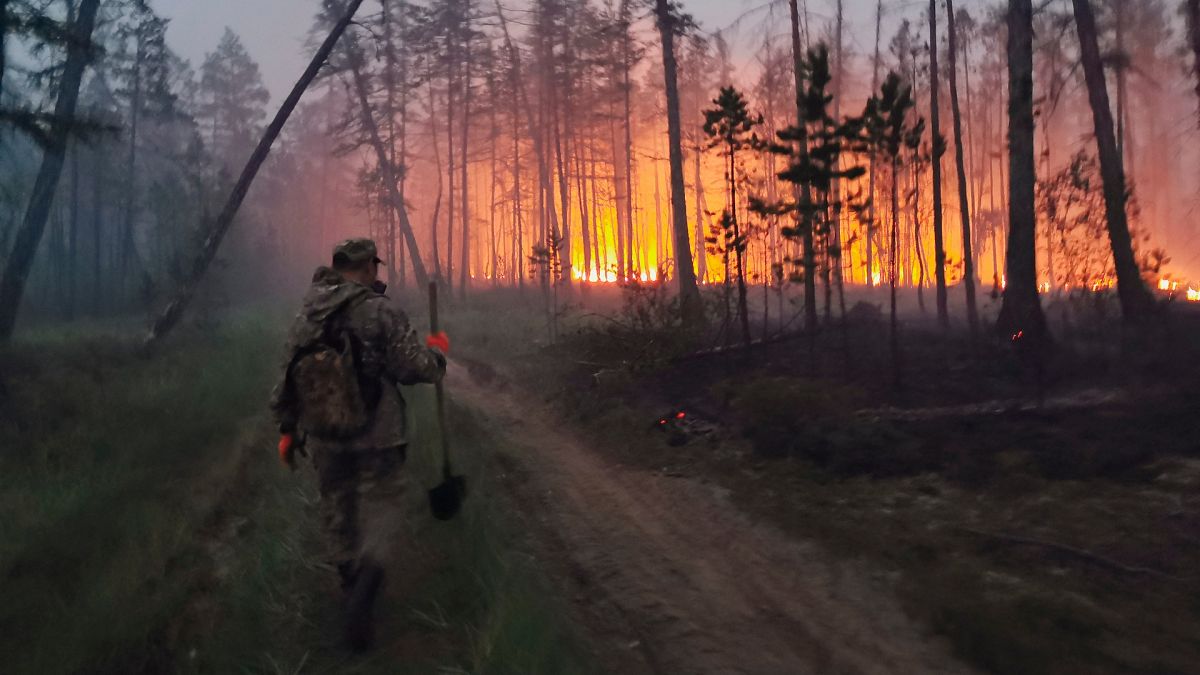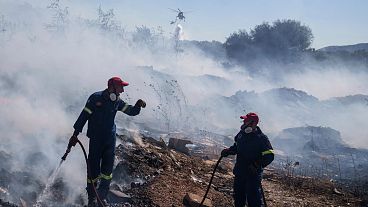Hot, dry weather has created conditions conducive for fires to ignite in the Arctic.
Intense wildfires above the Arctic Circle this June have released megatonnes of carbon into the atmosphere, according to EU scientists.
Data from the Copernicus Atmosphere Monitoring Service (CAMS) shows that a majority of the fires are burning in the Sakha Republic in Russia's Far North.
These seasonal blazes are moving north as climate change causes temperatures to rise in the Arctic. They tear through tundra and boreal forests, releasing greenhouse gases from the carbon-rich soil.
‘The largest increase in extreme wildfires over the last two decades’
The Sakha Republic has seen much higher temperatures and drier conditions than usual for this time of year. It has provided the perfect environmental conditions for wildfires to ignite.
“Fire emissions in the Arctic have been at fairly typical levels for the last three summers but we have observed the recent fires developing following warmer and drier conditions, similar to the widespread wildfires in 2019 and 2020,” says Mark Parrington, senior scientist at CAMS.
“This is the third time since 2019 that we are observing significant Arctic wildfires and showed that this northeast region of the Arctic has experienced the largest increase in extreme wildfires over the last two decades.”
More than 160 wildfires had burnt almost 460,000 hectares of land by 24 June, Andrey Konoplevhe, the region’s deputy minister of ecology, nature management and forestry was quoted as saying by Russian state news agency TASS.
CAMS says the estimated total monthly carbon emissions from these wildfires are the third highest in the past two decades at 6.8 megatonnes of carbon. This year’s fires only come behind 2020 and 2019, when 16.3 megatonnes and 13.8 megatonnes were recorded respectively.
Wildfires in the Northern Hemisphere tend to reach their peak in July and August.
The Arctic is ‘ground zero’ for climate change
Changes in the Arctic climate don’t just affect the local region, however. They are of major global significance as they impact the Earth’s entire climate system.
“The Artic is ground zero for climate change and the increasing risk of Siberian wildfires are a clear warning sign that this essential system is approaching dangerous climate tipping points,” says Gail Whiteman, professor at the University of Exeter and founder of non-profit science organisation Arctic Basecamp.
“What happens in the Arctic doesn’t stay there - Arctic change amplifies risks globally for all of us. These fires are a warning cry for urgent action.”















